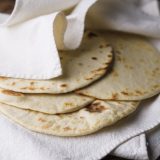The story of the Garifuna people, according to legend, starts with a shipwreck. A slave ship from Nigeria foundered off St. Vincent, and the survivors intermingled with both the native Arawaks and Caribs, eventually creating the Garifuna people.
In 1797, the British expelled the Garifuna, and many of the survivors ended up in coastal Honduras; others fanned out across Central America. Today, there are large communities of Garifuna in New York City, New Orleans, Miami and Los Angeles. There are twice as many Garifuna living in New York than Honduras.
That’s the history; now let me introduce you to Isha Sumner and the future of Garifuna.
I visited Sumner on Cape Cod last summer to cook a few traditional dishes with her and her mother, Sara Martinez. Sumner is a barely contained maelstrom of energy, exuding enormous enthusiasm for all things Garifuna. She was born in Honduras, lives in East Harlem and briefly returned to her birthplace with her sister to record the recipes of her childhood. She founded the Weiga (which translates as “Let’s Eat”) catering company and is an actress—she appeared on “Law and Order”—as well as a cookbook author.
Before meeting Sumner, I spent some time researching the Garifuna language on YouTube and was immediately charmed by its sound: a mix of French, West African and local Caribbean dialect. Sumner was kind enough to count to ten in Garifuna—aba, biama, üruwa, gadurü, sengü, sisi, sedü, vidü, nefu and disi—and I was twice charmed. It makes Italian sound positively unromantic. (Note that sisi, nefu and disi are quite close to the French six, neuf and dix.)
In her kitchen, I was quickly put to good use mashing cooked plantains using a large wooden mortar and pestle. This is the starting point for many dishes, including hudutu, the most famous of Garifuna recipes, a stew made from pounded plantains, fish and coconut. As Sumner’s sister Lina said, “While the plantains are boiling, men take a nap and expect to be awakened to do the mashing.” I didn’t get the nap, but I did get the workout. The trick, as I soon discovered, was to lift up the long, heavy wooden pestle, then let gravity do the rest.
In addition to hudutu, the menu included a fabulous bowl of mashed black beans, cassava bread, darasa (tamales made from green bananas) and—my favorite item—durudia tortillas. Thicker and fluffier than Mexican tortillas, they get richness in flavor and texture from coconut milk.
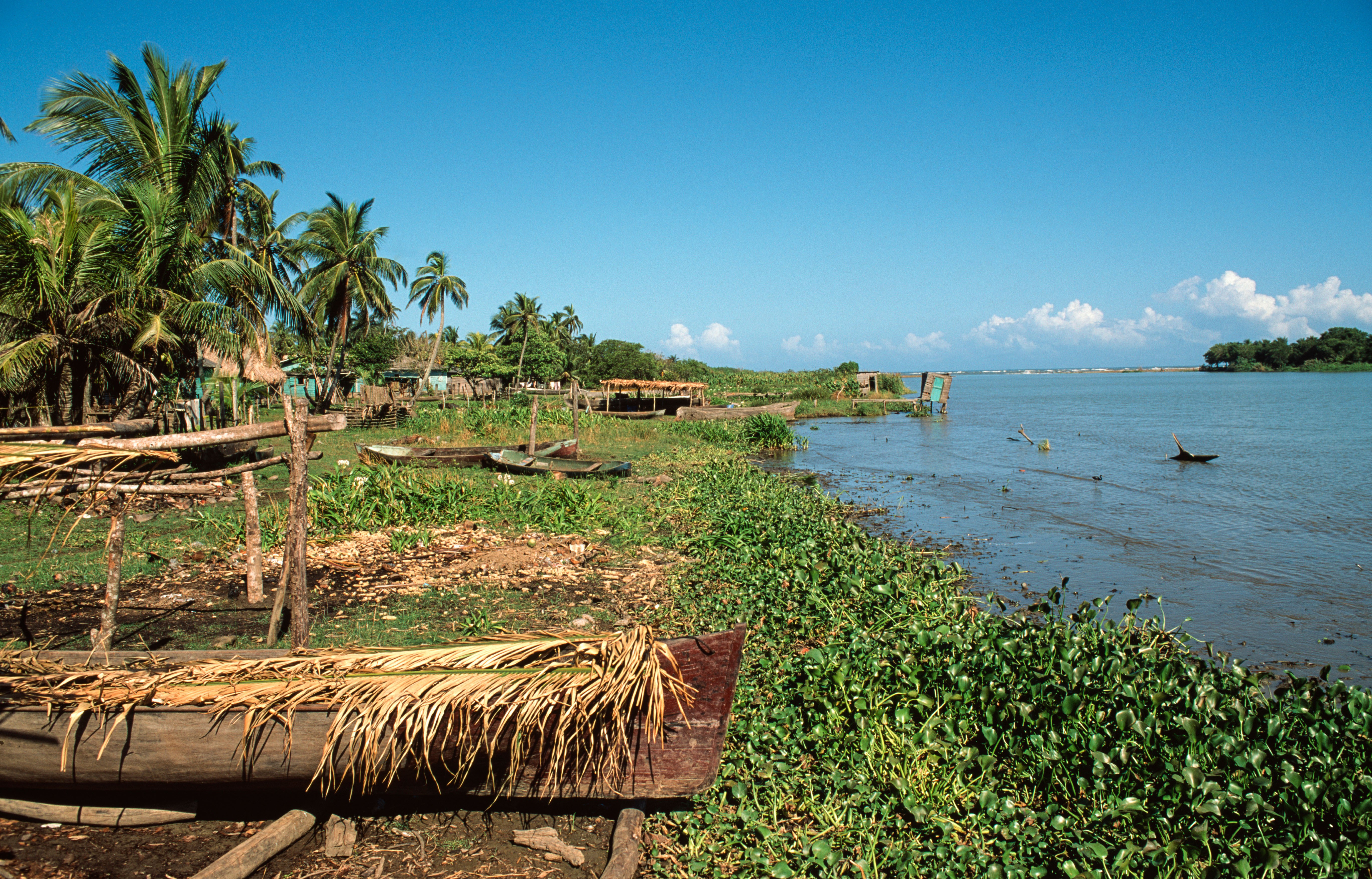


To make the durudia tortillas, Sumner first mixed wheat flour with a bit of salt, brown sugar, butter and baking powder in a large bowl. Then she poured in coconut milk, incorporating it into the flour by hand—taking it from a shaggy mixture to a soft and smooth dough.
She separated the dough into two balls, then let it rest for a while before dividing it into smaller portions to rest a second time. We pressed and patted the dough into plump disks, forming the durudia. The tortillas cooked in a hot cast-iron skillet, about 90 seconds per side, developing speckles of browning on their pale, tender surface.
In Cape Cod, I ate more than my share of durudia and hudutu and listened to the sound of Sumner and Martinez speaking in their native language. Garifuna is the language of food, one that easily romanced this home cook.
At Milk Street, we loved the rich flavor of these coconut milk tortillas—they were savory and faintly sweet, good enough to eat plain and even better with mashed black beans—but they were a tad thick and bready, more like flatbread than tortilla. We wanted to make them thinner and a bit closer to flour tortillas in texture.
We tested a number of ingredient substitutions, coconut oil for coconut milk, for example, and cornstarch for part of the flour. But Sumner’s ingredient list was spot on: flour, brown sugar, salt, baking powder, butter and coconut milk.
The only substantive change we made to the recipe was to reduce the proportion of coconut milk to flour. We also divided the dough right after mixing to eliminate the second resting period, and made the tortillas larger—producing thinner end results that were less bready than Sumner’s durudia.
The beauty of this dough is that it is soft and easy to roll out. Anybody can make durudia. All you need is a few basic ingredients, a skillet and an hour, most of it napping time.
Prepare the dough
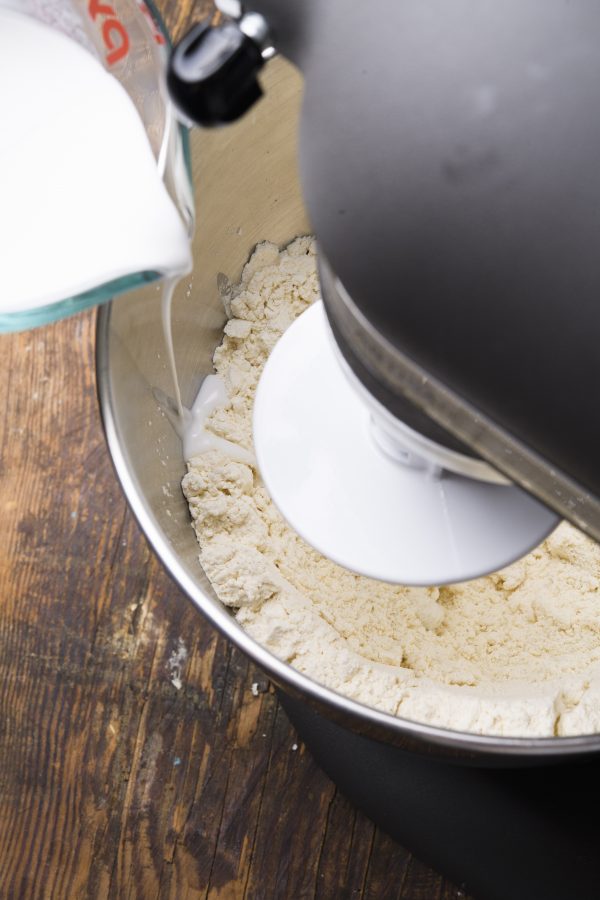
1. After incorporating the butter and with the mixer running on medium-low, gradually pour the coconut milk into the dough mixture.
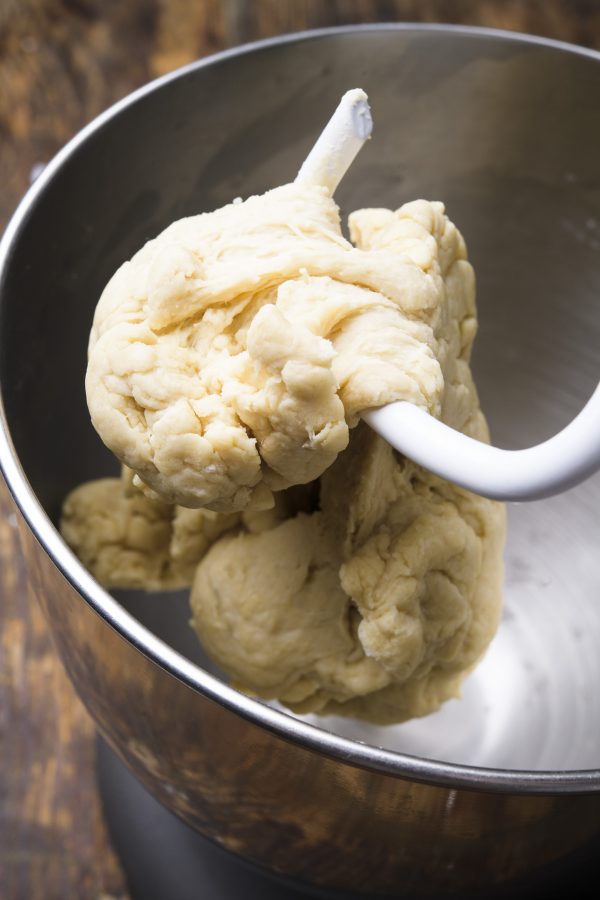
2. Continue mixing until a dough forms that clears the sides of the bowl. After kneading for about 5 minutes, the dough should be smooth.
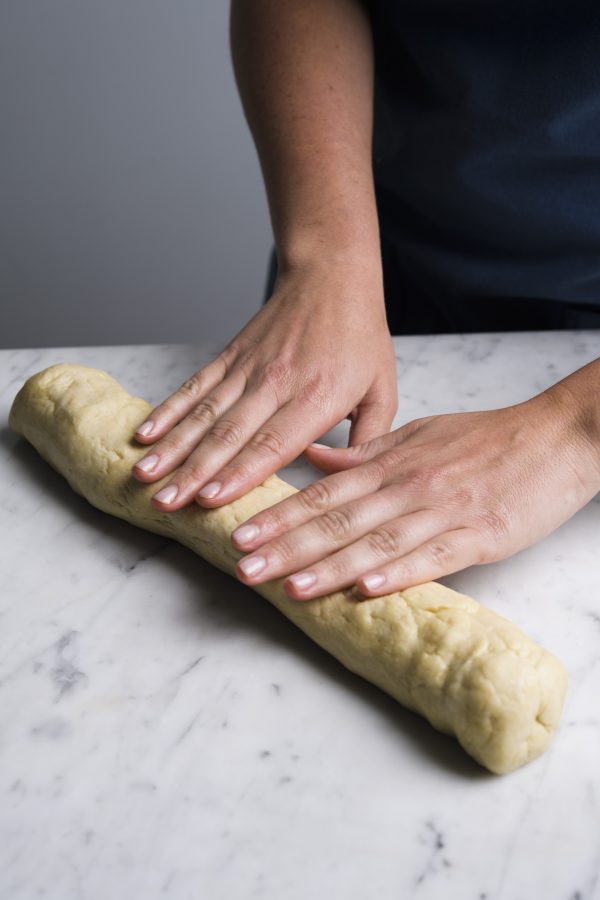
3. Transfer to the counter, then use your hands to shape the dough into a 14-inch cylinder about 2 inches in diameter.
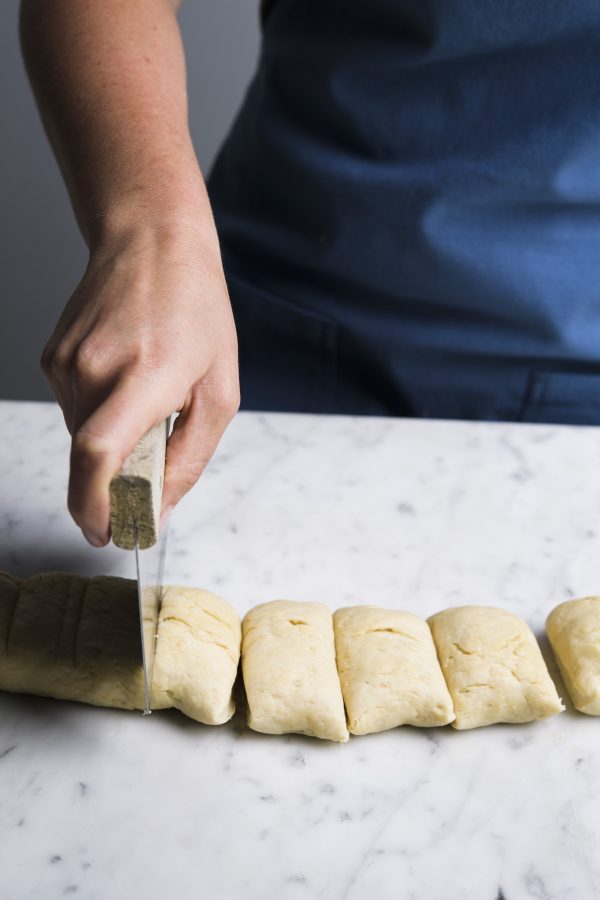
4. Using a bench scraper or a sharp chef’s knife, divide the dough cylinder into 8 even pieces. Next, shape each piece into a loose ball.
Shape and cook the tortillas
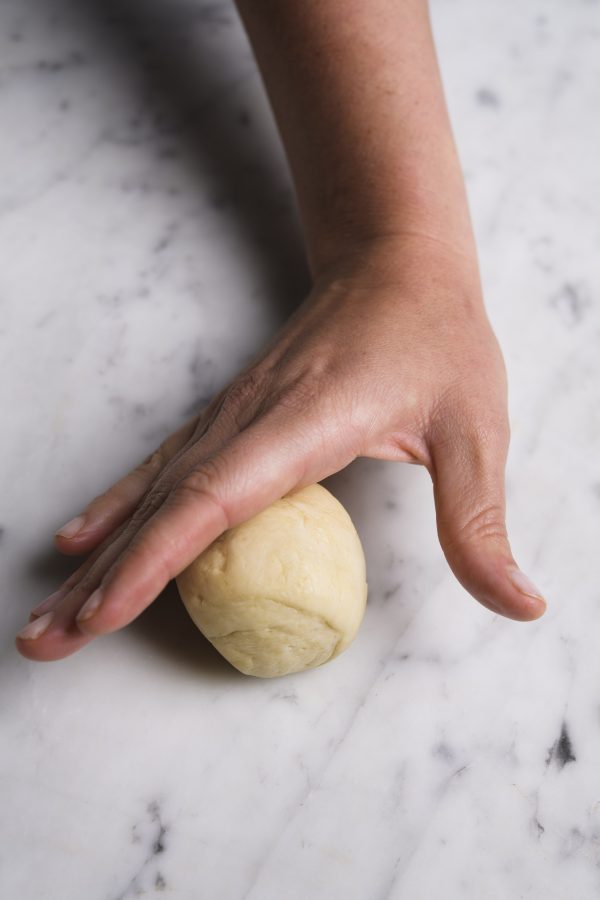
5. Roll each ball against the counter to form a tighter ball. Don’t flour the counter so that the dough slightly grips it, making it easier to shape.
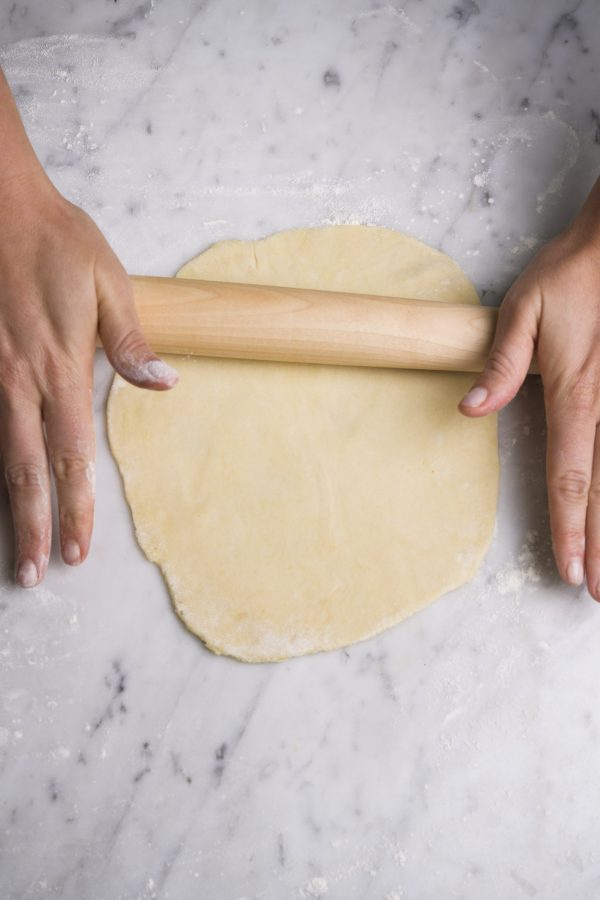
6. Using a rolling pin, roll each ball into an 8-inch round, stacking the rounds as they are done between pieces of parchment.
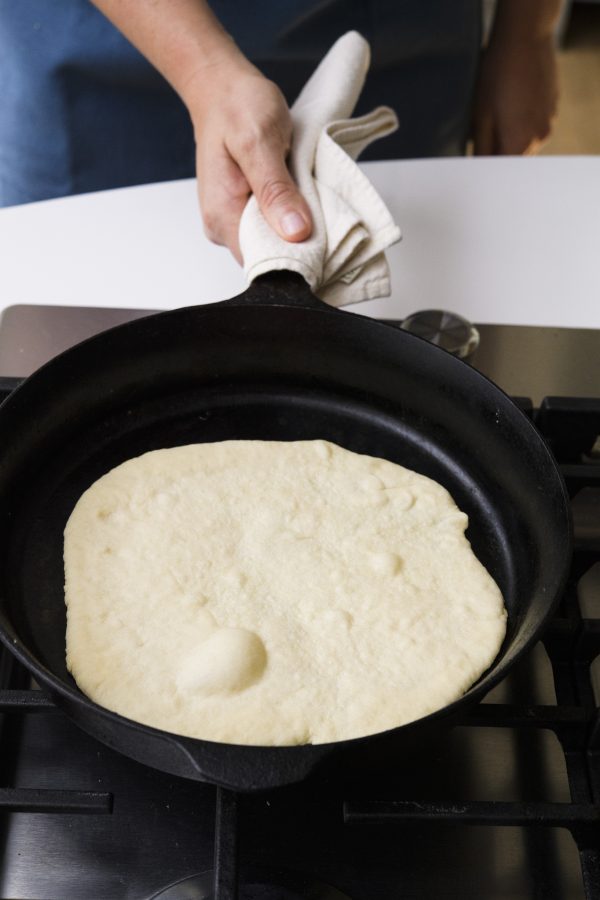
7. Place a dough round in the hot skillet and cook until bubbles form; gently shake the pan to loosen the tortilla and ensure that it does not stick.
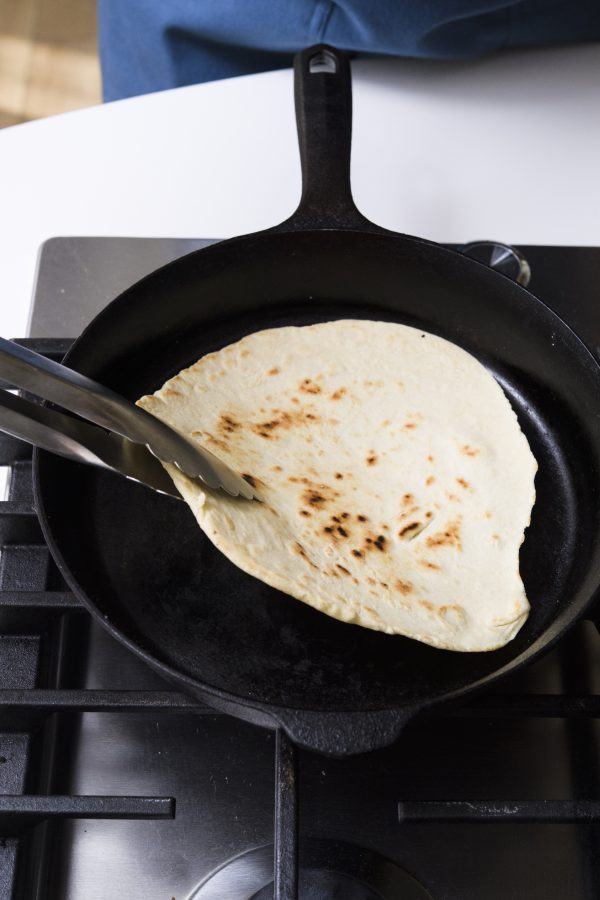
8. Continue to cook until the bottom is light spotty brown. Then, using tongs, flip and cook until the second side is spotty brown.
